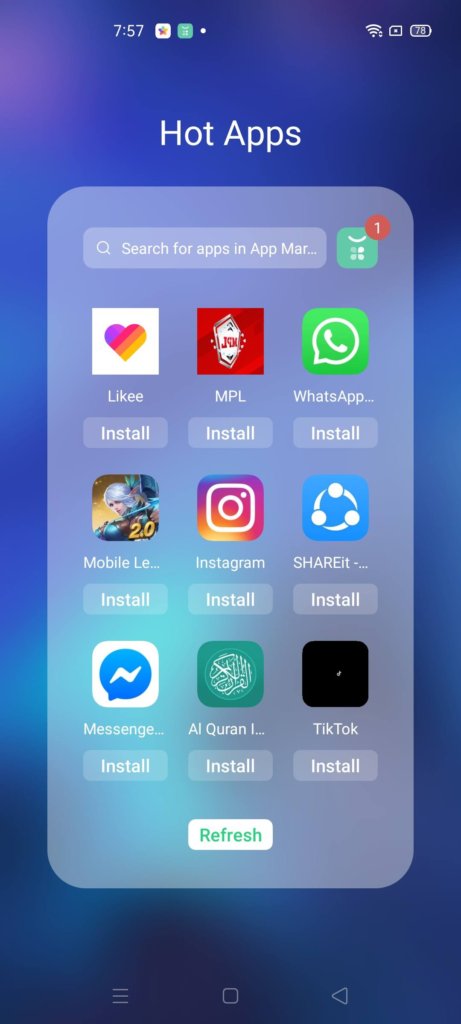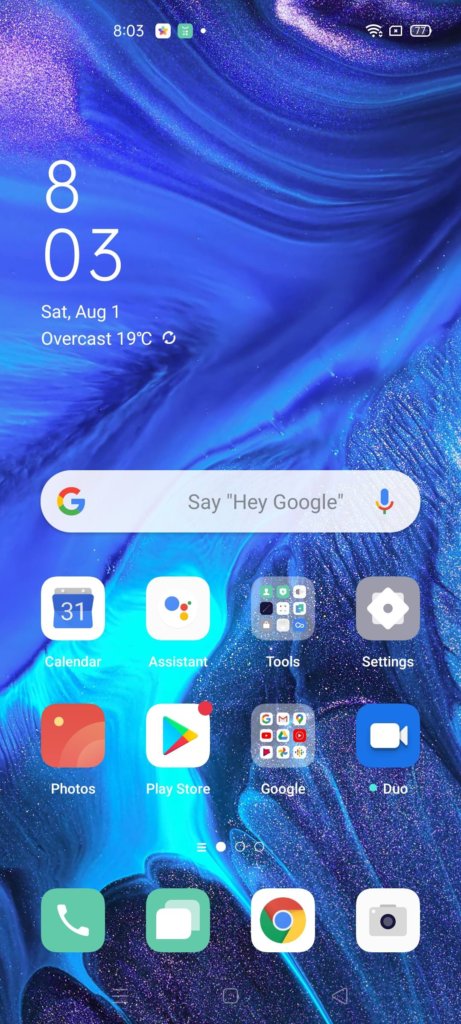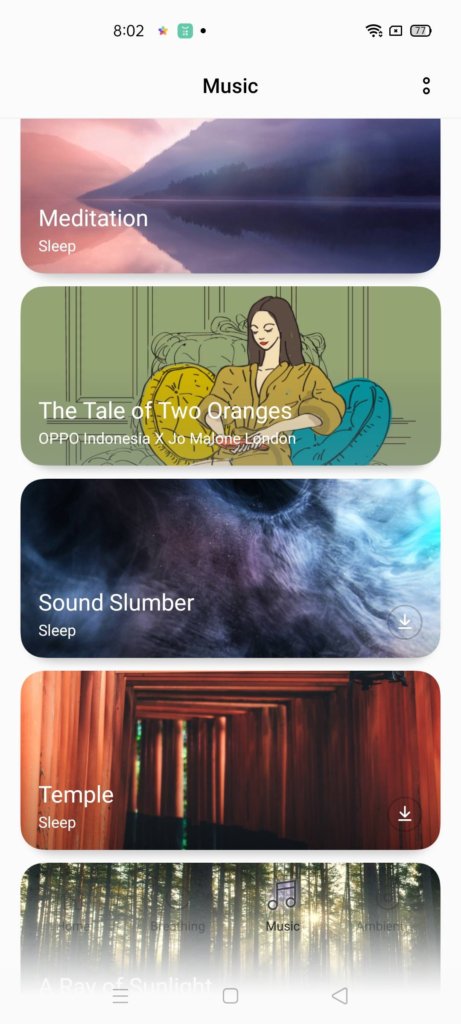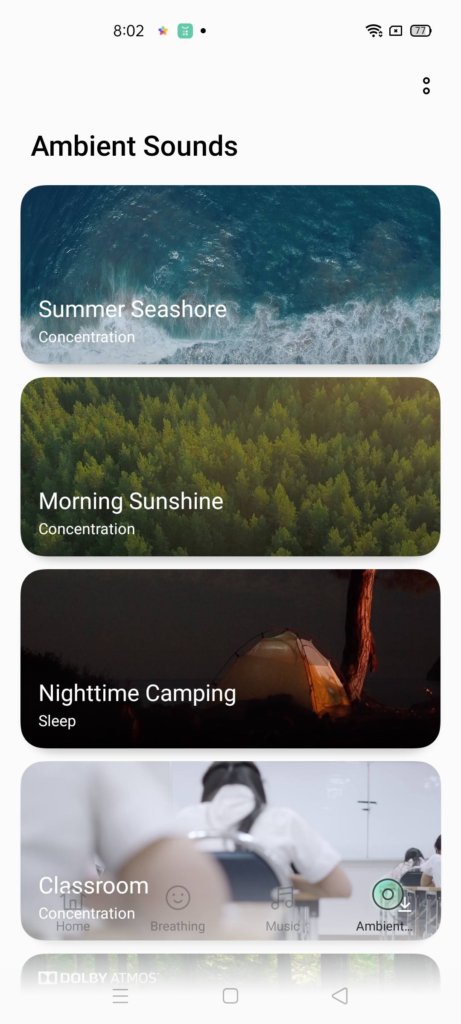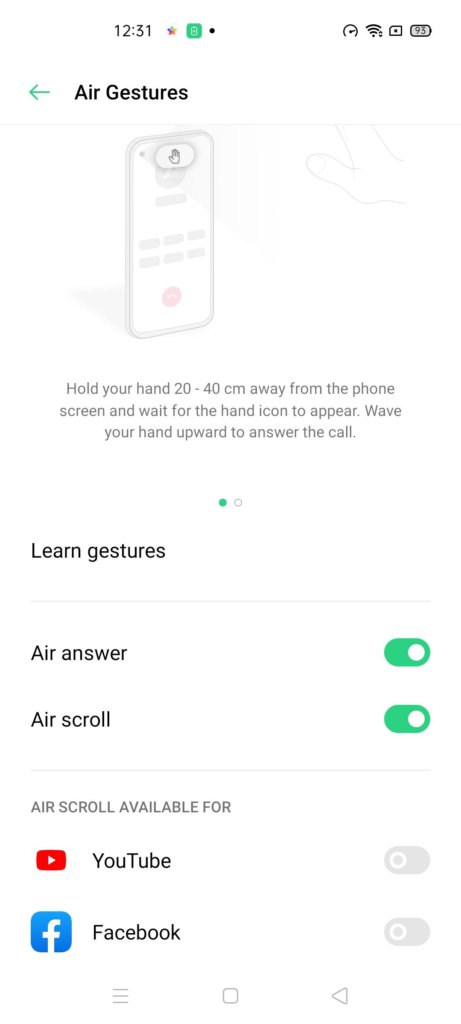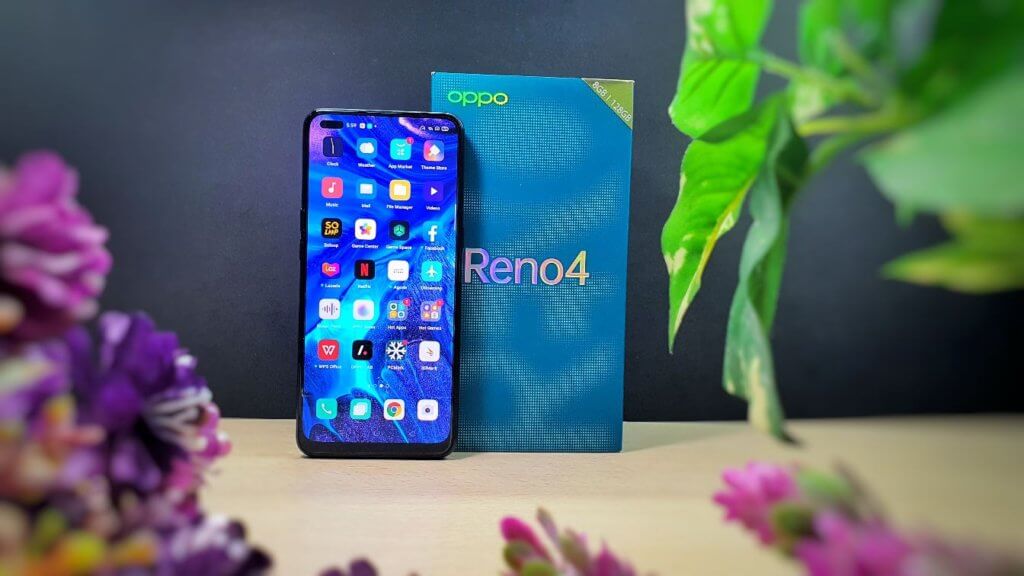
OPPO Reno 4 Review – Slick Midrange Reno Revolution
OPPO is certainly prolific when it comes to launching new phones and hot on the heels of their recent Reno 3 series launch earlier this year, the brand has just issued the new Reno 4 series smartphones that upgrade the displays and hardware while retaining a similarly premium looking design. The Reno 4 also has a higher end variant with slightly better specifications dubbed the Reno 4 Pro for a higher price tag.

OPPO Reno 4 unboxing and design
Table of Contents
Out of the box, the Reno 4 has a comprehensive array of accessories that cover all the basics. Bundled with the Reno 4 is a soft TPU casing, the usual SIM eject pin and quick start manual, a USB Type-C cable and a UK-style 30W VOOC 4.0 charger along with a pair of wired headphones with a 3.5mm audio jack. OPPO has also pre-applied a screen protector to the Reno 4’s display. All this makes for a very comprehensive array of kit that lets you start using it straight out of the box.
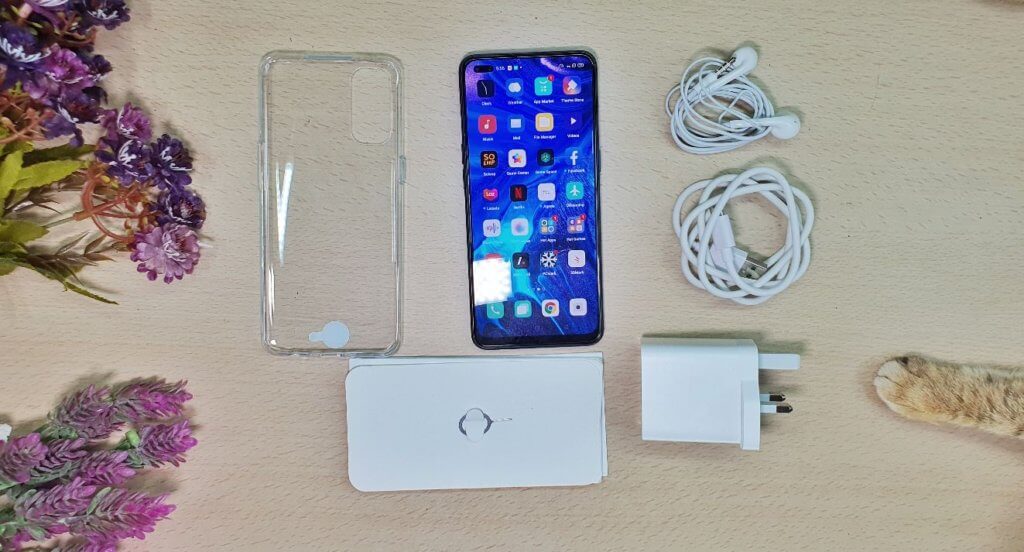
In terms of design, the more affordable Reno 4 looks somewhat similar to the higher end Reno 4 Pro with almost identical dimensions save for being slightly heavier by 4g.
Where the Reno 4 visually differs from its pricier sibling the Reno 4 Pro is that the Reno 4 has a pill-shaped cutout for a selfie camera that has what OPPO calls a ‘smart sensor’ riding shotgun along with a slightly smaller display by 0.1-inches. Both phones retain a similar midrange Snapdragon 720G processor and similar amounts of storage and RAM.
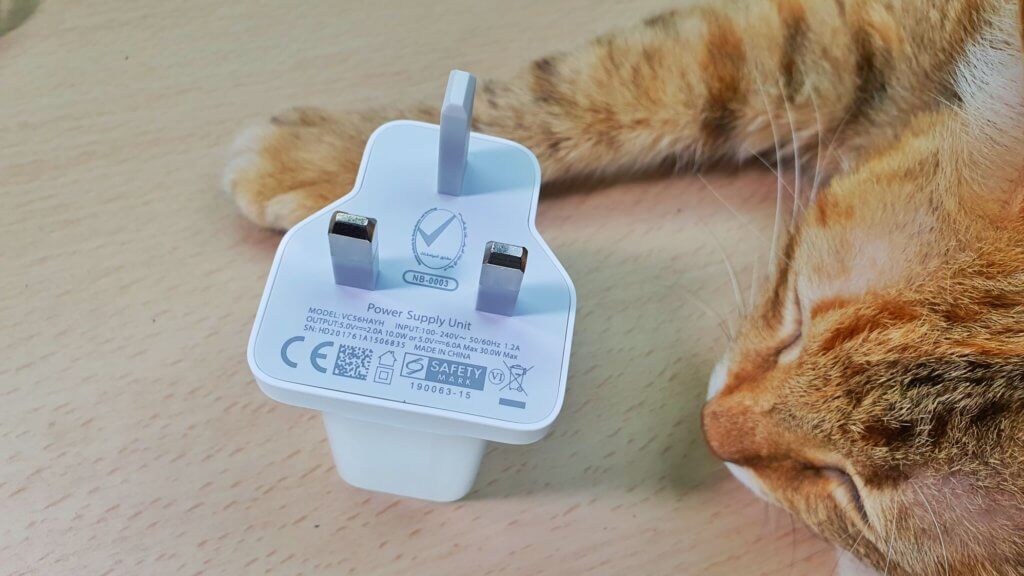
On closer inspection, the OPPO Reno 4 looks every bit like a flagship phone with a posh looking mirrored finish that lends it a premium tactility, gently rounded corners and a curved backplate. In Malaysia, the phone is available in two different paint jobs dubbed Space Black and Galactic Blue; our test unit came in the former.

While it looks exceptionally premium with a mirrored finish, the Reno 4’s backplate is primarily made of polycarbonate though their materials technology has certainly improved with a finish that mimics the look of glass.
As an Easter Egg of sorts, holding up the Space Black version to a certain angle under the light reveals a series of monograms emblazoned across the casing. The phone also has a pleasantly even heft and feels sturdy without any creaking.

The base of the phone hosts a USB Type-C port for charging and docking duties, a grille for the sole mono speaker and an increasingly rare 3.5mm audio jack for wired headphones.
The left side comes with a volume rocker and a triple SIM card tray that lets you pop in two nano SIM cards and a microSD card too; something that many flagship phones are unable to do. The right side is otherwise bare save for a power button.
Up front, you get a 6.4-inch FHD+ display with a pill-shaped cutout for the 32MP selfie camera and a decent 83.5% screen-to-body ratio on account of the slim bezels all around.
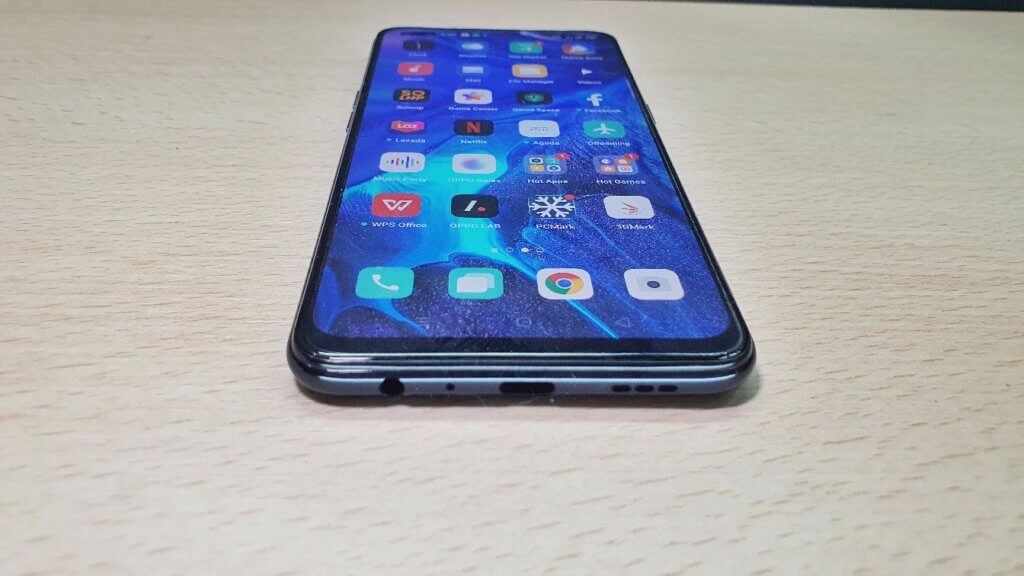
The only quibble here for what is otherwise good build quality is that the shiny backplate is also a fingerprint magnet that needs frequent wipedowns but the provision of the bundled casing considerably mitigates that hazard.
OPPO Reno 4 performance and benchmarks
In terms of hardware, both the Reno 4 and Reno 4 Pro have a similar Snapdragon 720G processor and battery size though the Reno 4 Pro has faster, more powerful Super VOOC 2.0 fast charging while the Reno 4 retains a slower but still respectable VOOC 4.0 30W fast charging tech.

The Reno 4 Pro has a slightly larger display with a 90Hz refresh rate while the Reno 4 is relegated to a modest 60Hz panel that’s just 6.4-inches in size with 1080 x 2,400 pixels resolution. One particular thing to note is that the version of the Reno 4 intended for the Malaysia market has 4G connectivity only. Here’s what the Reno 4 has under the hood in detail:
| Price | RM1,699 |
| Display | 6.4-inch Super AMOLED, 1080 x 3,400 pixels, 411ppi |
| Processor | Qualcomm Snapdragon 720G |
| OS | Android 10 w/ ColorOS 7.2 |
| Memory | 8GB RAM/ 128GB storage + triple card slot (2 nano SIM + micro SD) |
| Camera | 48MP F/1.7 w/ PDAF + 8MP F/2.2 ultrawide + 2MP F/2.4 macro + 2MP F/2.4 depth [rear] / 32MP F/2.4 [front] |
| Battery | 4015mAh w/ 30W VOOC 4.0 fast charging |
| Size/Weight | 160.3 x 73.9 x 7.7mm/165g |
When subjected to synthetic benchmarks, the Reno 4 scored the following:
| 3DMark Sling Shot Extreme OpenGL ES 3.1 | 2,544 |
| 3DMark Sling Shot Extreme Vulkan | 2,366 |
| Geekbench 5.2 Single core score | 566 |
| Geekbench 5.2 multi core score | 1755 |
| PCMark Work 2.0 performance | 8,079 |
| PCMark Work 2.0 Battery life | 13 hours 34 minutes |
In terms of firmware, the phone runs Android 10 overlaid with version 7.2 of their ColorOS user interface. As you’d expect from ColorOS, you’re able to tweak the look and theme of your phone down to the icons by downloading a variety of free themes though the better looking ones need you to fork out cash.
Like other phones of recent vintage from OPPO, the Reno 4 is replete with a ton of bloatware including their own app store, the Lazada shopping app preinstalled and shortcuts to ‘Hot Apps’ and ‘Hot Games’. You’ll likely have to spend some time doing some housekeeping when you first get the phone but it’s a straightforward process and most of these extras can be deleted without issue.
It’s not all bad though, OPPO has included a surprisingly useful app called OPPO Relax that plays relaxing white noise paired with soothing animations and also offers breathing exercises to calm you down. If there’s an app that needs to be preinstalled on all OPPO phones, OPPO Relax is it.
The phone also has what OPPO calls Air Gestures that let you perform gestures to control the phone by scrolling up or down to view content on Facebook, YouTube and Instagram as well as to take calls. Unfortunately, the Air Gestures are gimmicky at best and aren’t responsive if at all. The only time you’d actually use them would likely be if you’re eating something greasy and need to take a call.
That aside, the Reno 4 is nimble enough to tackle most tasks with easy swapping between a dozen open tabs in Chrome, switching between multiple apps like Quik, Power Director and Google Docs without significant lag and, of course, gaming too. Call of Duty Mobile and PUBG were handled smoothly on High settings without any hitches. On a side note, the phone supports Widevine L1 DRM so it’s able to stream HD content on Netflix.
Seeing as this is a Super AMOLED display, colour reproduction is pleasantly more vibrant than an LCD panel which makes watching movies and gaming a pleasant affair.
The sole mono speaker at the base was able to kick out a fair degree of sound with the addition of Dolby Atmos support adding a modicum of depth to audio though you can only do so much on a phone. Traditionalists will appreciate the option of a 3.5mm audio jack to listen in with wired headphones if needed.

The OPPO Reno 4 offered about 13 hours and 34 minutes of battery life in PCMark’s synthetic battery test benchmark. In our practical field test with WiFi on, phone calls, constant web browsing, a combination of YouTube and Netflix along with a few sessions of Call of Duty Mobile, we managed to eke out a good dozen hours of use.
From dead zero, you can take advantage of OPPO’s VOOC 4.0 30W charging to juice it to 50% in 20 minus and to full in just over an hour which is quite an achievement.
OPPO Reno 4 cameras
The OPPO Reno 4 has a rear quad camera array that is primarily centered around a main 48MP F/1.7 camera complemented by an 8MP macro camera as well as two smaller 2MP cameras with one for macro shots and another acting as a depth sensor.
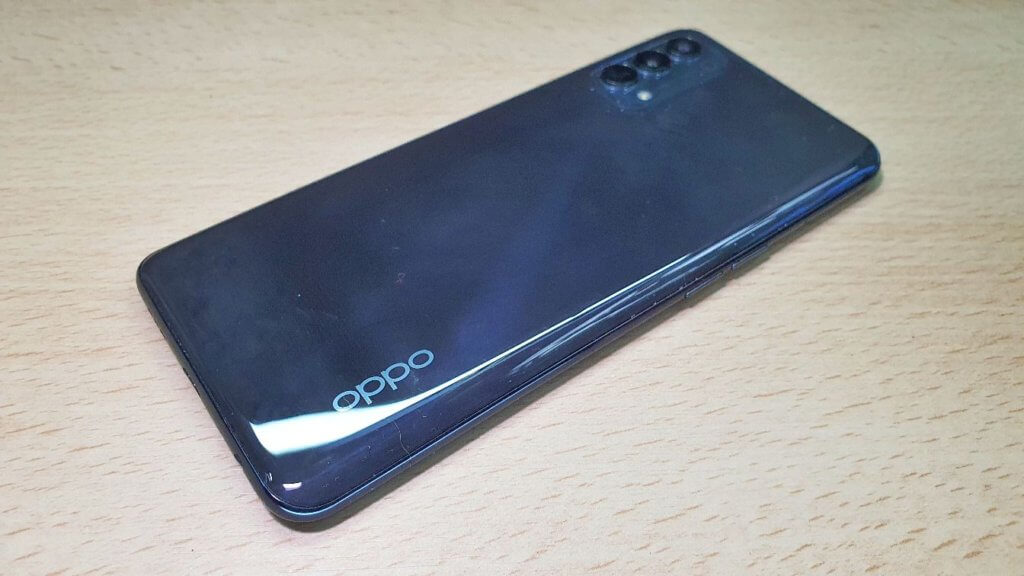
This quad camera array allows the Reno 4 to capture 12MP snaps and 4K@30fps video. While the camera doesn’t actually have any telephoto lens, you’re still able to digitally zoom in by cropping the sensor in 2x and 5x all the way to 10x increments. The front has a single 32MP F/2.4 selfie camera.

Primary camera under daylight conditions

Sunflowers taken under indirect light
In terms of the camera user interface, the Reno 4 doesn’t offer any new surprises. It has an optional ‘Dazzle’ mode for stills that bumps up the saturation to make greens and blues livelier though this is more a matter of personal taste. The camera UI also has the usual auto HDR mode and an increasingly common Night mode for low light shots.

The phone also has a Macro mode though it’s somewhat quaint in that you have to manually select Macro mode to activate the 2MP macro camera. If you access it from Auto mode, you’ll be getting the snaps from the main 48MP camera.
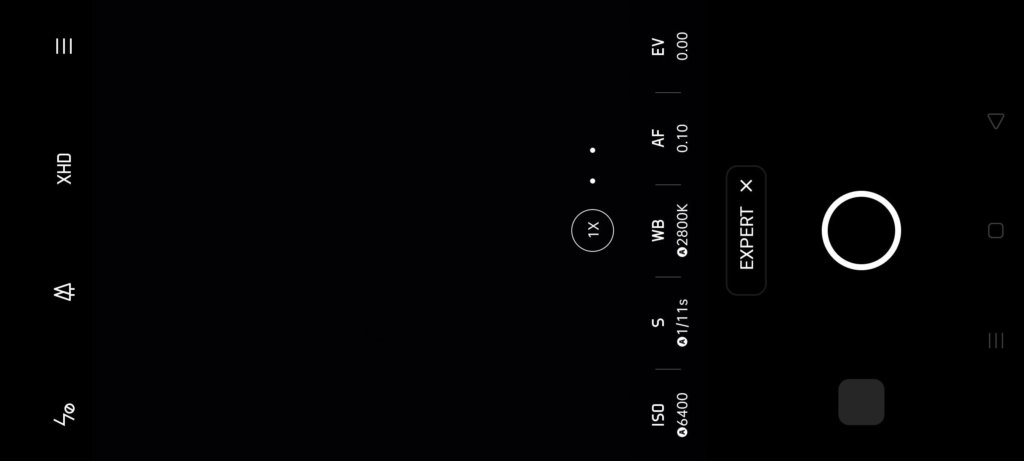
Shots from the main camera under daylight conditions are pretty good for its price range with HDR set on auto with good levels of detail though colours seem a bit washed out especially if you take snaps under direct sunlight. Zoomed in shots are simply cropped from the main 48MP sensor.At 2X there’s no loss of detail though beyond that things look quite noisy.

Taken under daylight with 1x using primary camera

Taken at 0.5x with ultra wide angle camera

Taken at 5X zoom with primary camera
Shots indoors and dim light offer were surprisingly good with the added Night mode adding in more dynamic range and saving a bit more detail and colours in night shots that would otherwise have been a swath of black.

If things are absolutely pitch black, the phone can automatically fire up an Ultra Dark Mode which can salvage poorly lit shooting scenarios with viewable, if still soft shots though you either need steady hands or a tripod for best effect.

Shot taken with primary camera under low light

Shot taken with Night Mode on with primary camera
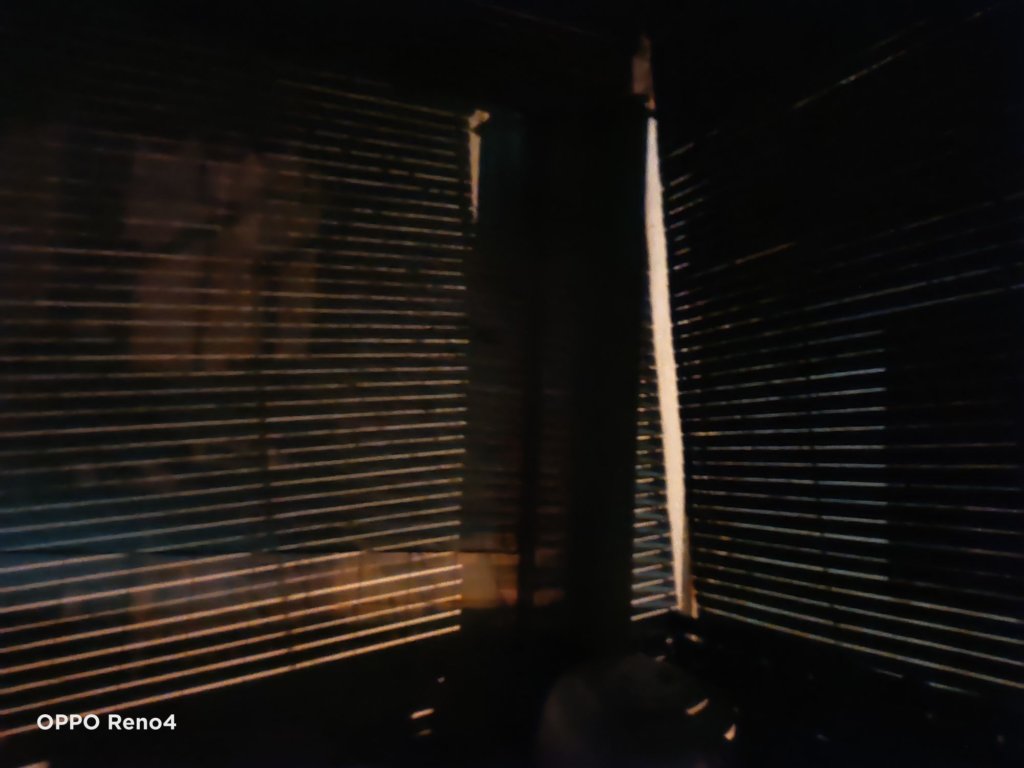
Ultra Dark Mode only kicks in when the camera detects almost pitch black conditions
Seeing the selfie centric nature of the phone, self portrait shots offer a fair amount of detail and good skin tone rendition with the typical beauty filters set in. Of particular note is its pleasantly restrained use of beautification filters on male subjects so that men don’t appear with baby smooth skin and startlingly rosy pink cheeks.
Videos captured at 1080P@60fps on the phone offered good levels of detail and colour rendition though praise needs to be given for the Reno 4’s excellent AI stabilisation that lets you capture surprisingly steady footage even when handheld.
OPPO Reno 4 Price and Verdict
The OPPO Reno 4 offered about 13 hours and 34 minutes of battery life in PCMark’s synthetic battery test benchmark. In our practical field test with WiFi on, phone calls, constant web browsing, a combination of YouTube and Netflix along with a few sessions of Call of Duty Mobile, we managed to eke out a good dozen hours of use.
From dead zero, you can take advantage of OPPO’s VOOC 4.0 30W charging to juice it to 50% in 20 minus and to full in just over an hour which is quite an achievement.
As it stands, the OPPO Reno 4 is a fairly good midrange phone with a good balance of performance, a vibrant Super AMOLED display and a competent set of cameras for casual usage. If you’re looking for a sub RM1.7K phone, this makes for a sound choice though those seeking a more powerful solution with a 90Hz display and even faster battery charging ought to gravitate towards the slightly better specced OPPO Reno 4 Pro for RM700 more.
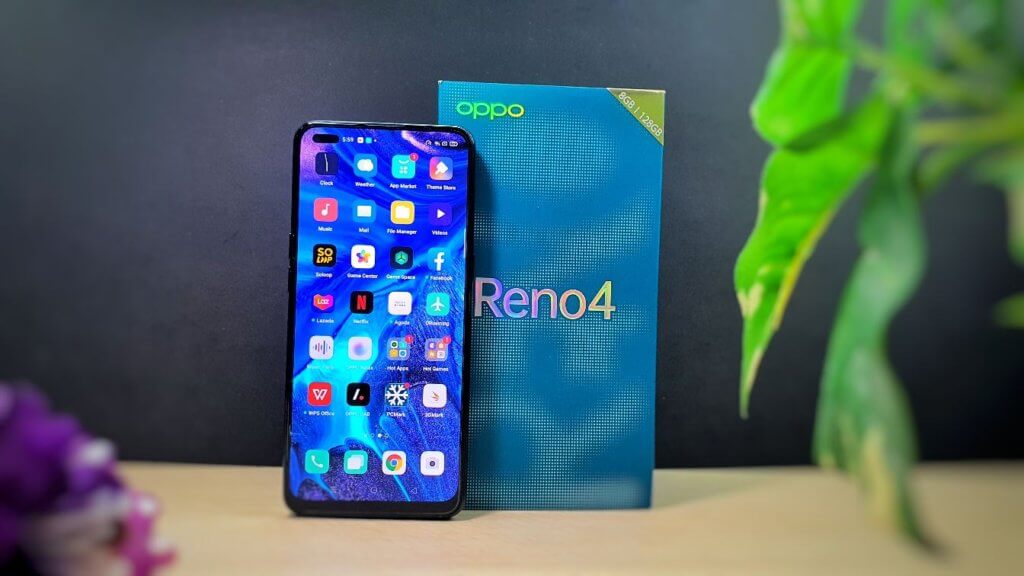
What we liked Contemporary design, triple card slot, fast VOOC 4.0 charging, still has an audio jack
What we didn’t Middling mono speakers, gimmicky Air Gestures mode
We say The OPPO Reno 4 offers much of the performance and user experience of its higher end sibling the Reno 4 Pro while retaining a more modest sub RM1.7K price point.
Review unit courtesy of OPPO Malaysia. Available for purchase at their page here.
OPPO Reno 4
-
Display
-
Performance
-
Cameras
-
Battery Life
-
Value
OPPO Reno 4
As it stands, the OPPO Reno 4 is a fairly good midrange phone with sound performance, a vibrant Super AMOLED display and a competent set of cameras for casual usage.

